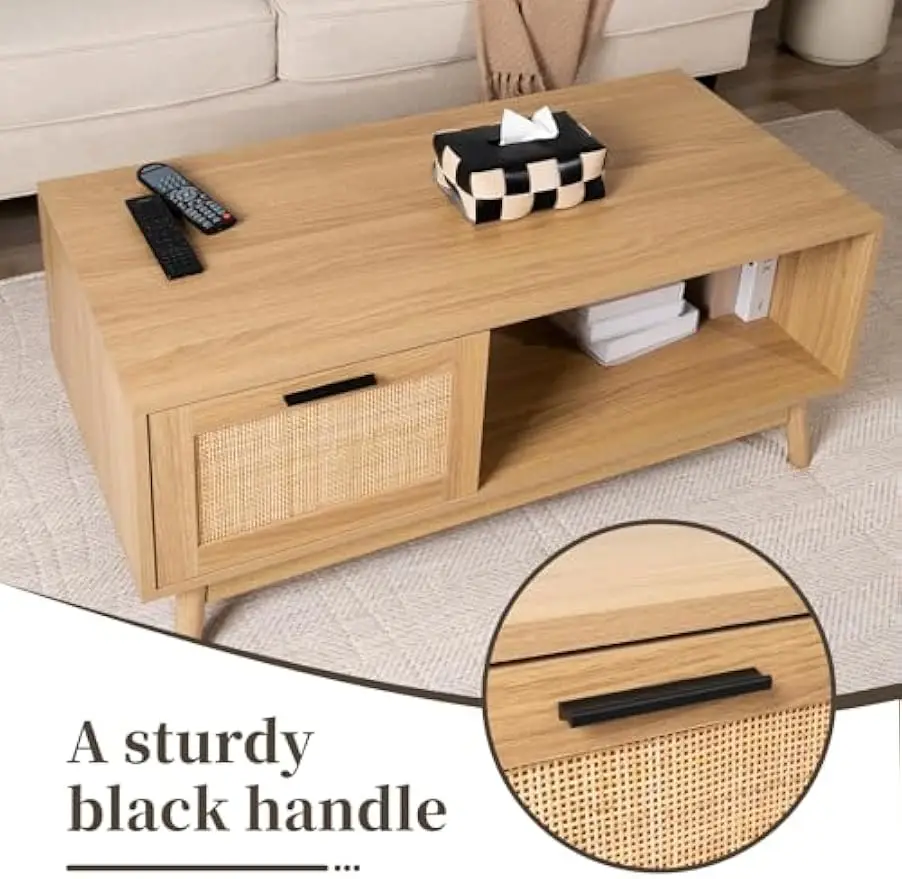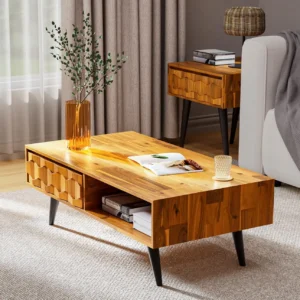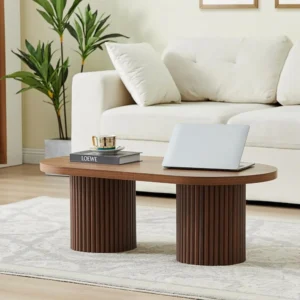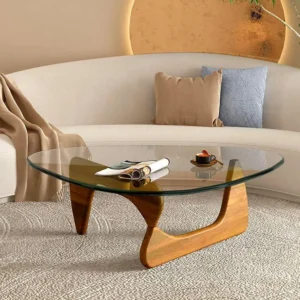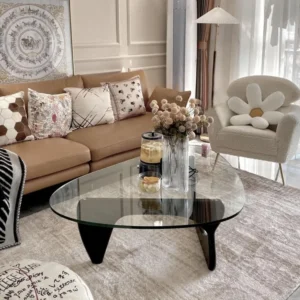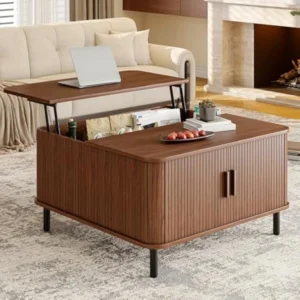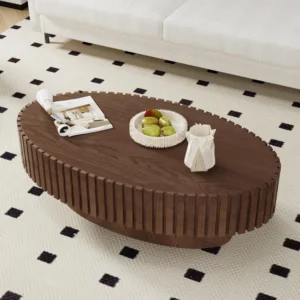Introduction: The Critical Role of Finishes in Coffee Table Performance
A wood finish is far more than just a final touch for your coffee table—it’s essential protection and enhancement rolled into one. Coffee tables face unique challenges in our homes: they endure constant use, withstand drink spills, hold hot plates and cups, and often serve as centerpieces in our living spaces. The right finish provides crucial defense while bringing out the natural beauty of the wood.
Coffee tables without proper finishing are vulnerable to:
– Water rings from glasses and mugs
– Scratches from decorative items and daily use
– Heat marks from hot beverages and plates
– General wear that dulls the wood’s natural beauty
The world of wood finishes typically falls into three main categories: film-forming finishes that create a protective layer on top of the wood, penetrating finishes that soak into the wood fibers, and hybrid options that combine different properties. Choosing the ideal finish depends on your specific needs, preferred appearance, and how your intelligent black mid-century coffee tables or other styles are used in your home.
The right finish transforms beautiful mid-century modern solid wood coffee tables from vulnerable wooden surfaces into durable furnishings that maintain their beauty for years to come.
Film-Forming Finishes: Maximum Protection for High-Use Coffee Tables
Film-forming finishes create a protective layer that sits on top of the wood surface rather than soaking in. This protective “film” serves as a shield against moisture, heat, and physical damage—making these finishes ideal for high-traffic coffee tables that see daily use.
A. Polyurethane: The Durable Workhorse
Polyurethane is among the most popular finishes for coffee tables due to its exceptional durability and versatility. It comes in two main varieties:
Water-based polyurethane:
– Dries clear with minimal color enhancement
– Low odor and VOCs (volatile organic compounds)
– Faster drying time (2-3 hours between coats)
– Less durable than oil-based, but still very protective
– Easier cleanup with water
Oil-based polyurethane:
– Adds amber warmth to wood tones
– Higher durability against scratches and heat
– Longer drying time (8-24 hours between coats)
– Stronger odor requiring better ventilation
– Requires mineral spirits for cleanup
Polyurethane provides excellent protection against water rings, scratches, and everyday wear. Available in matte, satin, semi-gloss, and high-gloss sheens, you can match any aesthetic preference while maintaining protection.
For coffee tables, 3-4 coats provide optimal protection. While minor scratches in polyurethane can be buffed out or spot-repaired, significant damage requires sanding and refinishing the affected area.
B. Varnish: Traditional Protection with Modern Formulations
Varnish is a traditional finish that combines oil, resin, and solvents to create a durable protective coating. Modern varnishes have improved significantly over older formulations:
- Exceptional moisture resistance, especially marine/spar varnish
- Good heat resistance for coffee table use
- Available in various sheens from matte to glossy
- Typically requires 3+ coats for optimal protection
- Moderately difficult application requiring careful brushwork and dust control
Spar varnish, designed originally for boats, offers excellent UV protection and flexibility—making it suitable for coffee tables in sunlit rooms. However, varnish generally has longer drying times between coats (8-24 hours) compared to other finishes.
C. Lacquer: Sleek and Sophisticated
Lacquer creates an exceptionally smooth, high-end appearance that showcases the beauty of fine woods used in many stylish black mid-century coffee tables. Its distinct properties include:
- Fast drying time (30 minutes to 2 hours between coats)
- Extremely smooth finish with high clarity
- Good durability against water and moderate heat
- Typically requires spray application for best results
- More difficult to repair than other finishes
Lacquer’s quick drying time allows multiple coats in a single day, but proper application requires skill and specialized equipment. It’s less DIY-friendly than other options but delivers a professional-looking result that enhances the grain patterns found in walnut coffee tables and other fine woods.
D. Shellac: Classic Beauty with Limitations
Shellac is a natural finish made from insect secretions with a long history in furniture making:
- Creates warm amber tones that enhance wood grain
- Dries quickly (1-3 hours between coats)
- Easy to apply with minimal preparation
- Excellent for antique or decorative coffee tables
- Very poor resistance to water, alcohol, and heat
While beautiful, shellac’s significant limitations make it unsuitable for most functional coffee tables. Water rings form easily, and alcoholic drinks can dissolve the finish on contact. It’s best reserved for display pieces or as a base coat under other finishes to enhance grain pop in specific wood species.
Penetrating Finishes: Natural Beauty with Moderate Protection
Unlike film-forming finishes that create a protective layer on top of the wood, penetrating finishes soak into the wood fibers themselves. These finishes enhance the natural beauty and tactile feel of wood while providing a more subtle type of protection.

A. Pure Oil Finishes: Enhancing Wood’s Natural Character
Oil finishes penetrate wood fibers to provide protection from within while maintaining the natural feel of the wood. Several oil options are popular for coffee tables:
Tung Oil:
– Provides water-resistant protection when fully cured
– Creates a matte to satin finish that enhances grain
– Requires multiple coats (5+ typically recommended)
– Relatively long curing time (7-30 days to fully harden)
Boiled Linseed Oil:
– Adds rich amber coloring to wood
– Easier application than tung oil
– Less water resistance than tung oil
– Shorter drying time between coats (24-48 hours)
Danish Oil:
– Actually a blend of oils with resins and thinners
– Easier application with good penetration
– Better water resistance than pure oils
– Good compromise between pure oils and film finishes
Oil finishes are ideal for coffee tables where maintaining the wood’s natural feel is a priority. They’re relatively easy to apply—simply wipe on, let penetrate, then wipe off excess—but require more frequent maintenance. Reapplication every 6-12 months keeps the protection fresh and the wood looking its best. The ultimate guide to solid wood coffee tables further explains how these finishes can enhance natural wood beauty.
B. Hardwax Oils: The Best of Both Worlds
Hardwax oils have gained popularity as they combine the penetrating qualities of oils with additional surface protection from waxes:
- Create a natural-looking satin finish
- Provide good water and stain resistance
- Relatively easy application process
- Simple spot repairs without sanding
- Require less frequent maintenance than pure oils
Products like Osmo Polyx Oil and Rubio Monocoat have become favorites for teak coffee tables and other fine woods. These finishes penetrate the wood while leaving microscopic amounts of wax and oil on the surface for additional protection. They offer much better water resistance than pure oils while maintaining the natural look and feel that many mid-century modern designs call for.
Maintenance typically involves simple cleaning and occasional refresher coats in high-wear areas without needing to sand the entire surface—a significant advantage over film finishes.
Wax Finishes: Traditional Beauty with Special Considerations
Wax finishes represent the most traditional approach to wood protection, dating back centuries. While limited in protection, they offer unique aesthetic qualities that some coffee table owners prefer.
Key properties of wax finishes include:
– Soft, lustrous appearance that feels wonderful to touch
– Enhances wood grain without significant color change
– Very limited protection against water, heat, and scratches
– Requires frequent reapplication (every 3-6 months)
– Simple application and repair process
Paste wax (often beeswax or carnauba based) is applied by rubbing into the wood surface, allowing it to haze, and then buffing to a soft sheen. The result is a surface with depth and a pleasant tactile quality.
While not practical for high-use coffee tables, wax finishes are appropriate for:
– Decorative or display coffee tables
– Vintage coffee tables where maintaining historical authenticity is important
– As a top coat over other finishes to add additional luster
– Low-use environments where maintenance isn’t a concern
Application typically involves:
1. Clean the wood surface thoroughly
2. Apply thin coats of paste wax with a cloth or fine steel wool
3. Allow to dry until hazy (15-30 minutes)
4. Buff vigorously with a clean cloth to develop sheen
5. Repeat for additional protection
Selecting the Perfect Finish for Your Coffee Table: Decision Factors
Choosing the right finish depends on balancing protection needs, aesthetic preferences, and practical considerations. Consider these factors when making your decision:
1. Usage Intensity
– Family room with children: Polyurethane or varnish provides maximum protection
– Formal living area: Oil or hardwax oil enhances natural beauty with adequate protection
– Display or occasional use: Shellac or wax can prioritize appearance over durability
2. Household Factors
– Homes with pets: Choose scratch-resistant film finishes like polyurethane
– Households with children: Select water-resistant, wipeable finishes
– Adult-only households: More freedom to choose based on appearance preferences
3. Moisture Exposure
– Frequently used for drinks: Film finishes provide best protection against rings
– Minimal drink use: Hardwax oils offer good middle ground
– Coasters always used: More freedom to choose penetrating finishes
4. Desired Appearance
– Natural wood look and feel: Oil or hardwax oil finishes
– Maximum grain enhancement: Shellac or oil-based polyurethane
– Modern, high-end look: Lacquer or water-based polyurethane
– Period-appropriate for vintage: Consider shellac or wax for black mid-century modern coffee table styles
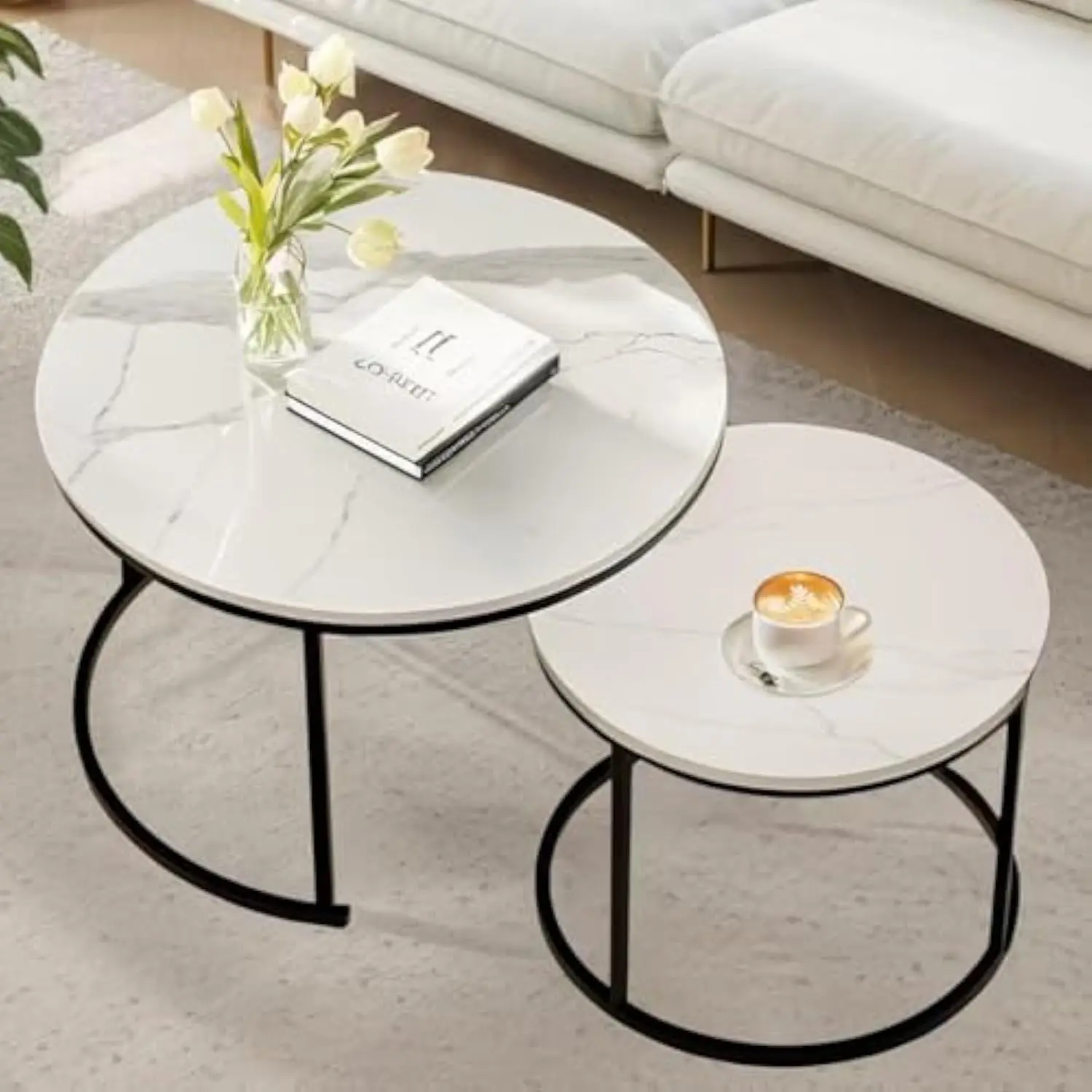
5. Application Considerations
– DIY-friendly options: Oil finishes, wax, and brushable polyurethane
– Limited ventilation: Water-based products recommended
– Limited time: Fast-drying options like lacquer or water-based polyurethane
– Limited skill: Oil and hardwax oil are most forgiving
6. Maintenance Commitment
– Low maintenance preference: Film finishes last years before requiring attention
– Willing to perform regular maintenance: Oil finishes can be refreshed easily
– Enjoy wood care as a hobby: Wax finishes provide regular interaction with the piece
7. Wood Species Factors
– Open-grain woods (oak, ash): Film finishes may require grain filling first
– Oily exotic woods: May reject some finishes and require special preparation
– Learning to identify real wood coffee tables helps determine the most compatible finish options
Application Essentials: Preparation and Techniques
Regardless of which finish you select, proper preparation and application technique significantly impact the final result.
Surface Preparation
- Clean the surface thoroughly to remove all dust, oils, and contaminants
- Repair any damage with appropriate wood filler
- Sand progressively through grits:
– Start with 80-120 grit to level the surface
– Progress to 150-180 grit for general smoothing
– Finish with 220 grit for most finishes (up to 320 for ultra-smooth finishes) - Remove all sanding dust with vacuum, tack cloth, and/or microfiber cloth
- For open-grained woods, consider grain filling before finishing
Application Best Practices
Environmental Control
– Work in dust-free environment between 65-75°F (18-24°C)
– Maintain moderate humidity (40-60%)
– Ensure adequate ventilation, especially for solvent-based finishesTool Selection
– Film finishes: High-quality natural or synthetic brushes, foam applicators
– Oil finishes: Lint-free cloths or applicator pads
– Wax finishes: Cotton cloths or #0000 steel wool for applicationApplication Technique
– Apply thin, even coats (multiple thin coats outperform fewer thick ones)
– Follow wood grain direction during application
– Maintain wet edge when using film-forming finishes
– Allow proper drying time between coats (follow manufacturer recommendations)
– Light sanding (320-400 grit) between coats for film finishes
Remember that drying time (when the finish is no longer tacky) differs from curing time (when the finish reaches maximum hardness and chemical resistance). Full curing can take from several days to a month depending on the finish type and environmental conditions.
Mid-Century Modern Solid Wood Coffee Tables, Mid-Century Modern Teak Coffee Tables
$879.95 Select options This product has multiple variants. The options may be chosen on the product pageMid-Century Modern Danish Coffee Tables, Mid-Century Modern Oval Coffee Tables, Mid-Century Modern Solid Wood Coffee Tables
$390.05 Select options This product has multiple variants. The options may be chosen on the product pageMid-Century Modern Glass Top Coffee Tables, Mid-Century Modern Glass Top Side & End Tables
$460.58 Select options This product has multiple variants. The options may be chosen on the product pageMid-Century Modern Glass Top Coffee Tables, Mid-Century Modern Vintage Coffee Tables, Mid-Century Modern Vintage Side & End Tables
$725.36 Select options This product has multiple variants. The options may be chosen on the product pageMid-Century Modern Lift Top Coffee Tables, Mid-Century Modern Square Coffee Tables
$454.73 Select options This product has multiple variants. The options may be chosen on the product pageMid-Century Modern Oval Coffee Tables, Mid-Century Modern Solid Wood Coffee Tables
$679.56 Select options This product has multiple variants. The options may be chosen on the product page
Coffee Table Finish Comparison: At-a-Glance Decision Guide
| Finish Type | Water Resistance | Heat Resistance | Scratch Resistance | Appearance | Application Difficulty | Maintenance Level | Best Use Case |
|---|---|---|---|---|---|---|---|
| Water-Based Polyurethane | 4/5 | 3/5 | 3/5 | Clear, minimal color change | 3/5 | Low | Family rooms, high-use tables |
| Oil-Based Polyurethane | 5/5 | 4/5 | 4/5 | Amber warmth | 3/5 | Low | High-traffic areas, dining tables |
| Varnish | 5/5 | 4/5 | 4/5 | Traditional luster | 4/5 | Low | Moisture-prone environments |
| Lacquer | 4/5 | 3/5 | 3/5 | High-clarity, sleek | 5/5 | Medium | Modern, showcase pieces |
| Shellac | 2/5 | 2/5 | 2/5 | Warm amber glow | 2/5 | High | Display tables, antiques |
| Tung Oil | 3/5 | 3/5 | 2/5 | Natural matte to satin | 2/5 | Medium-High | Natural-look preference |
| Danish Oil | 3/5 | 3/5 | 2/5 | Enhanced grain | 1/5 | Medium | Easy application priority |
| Hardwax Oil | 4/5 | 3/5 | 3/5 | Natural satin | 2/5 | Medium | Balance of look and protection |
| Paste Wax | 2/5 | 2/5 | 1/5 | Soft luster | 1/5 | High | Low-use, decorative pieces |
Long-Term Care: Maintaining Your Coffee Table Finish
Different finishes require specific care routines to maintain their beauty and protection over time.
Film Finish Maintenance
- Clean with a slightly damp cloth and mild soap if needed
- Avoid harsh chemicals, ammonia, or silicone-based products
- Use coasters, pads, and trivets to prevent damage
- Address minor scratches with finish-specific polish or restoration products
- Refinish only when the protective layer has worn through in places
Oil Finish Maintenance
- Clean with a slightly damp cloth, drying immediately
- Refresh dry-looking areas by applying additional thin coats of oil
- Reapply oil every 6-12 months in normal use areas
- Spot-treat damaged areas by light sanding and reapplication
- No need to remove old finish before reapplication
Wax Finish Maintenance
- Dust with soft cloth regularly
- Clean with barely damp cloth, never soaking
- Reapply thin coat of wax every 3-6 months
- Rejuvenate by removing old wax with mineral spirits before applying fresh coat
Lift-top coffee tables with moving parts require special attention to ensure mechanisms continue to function smoothly, particularly around hinges and joints where finish may wear more quickly.
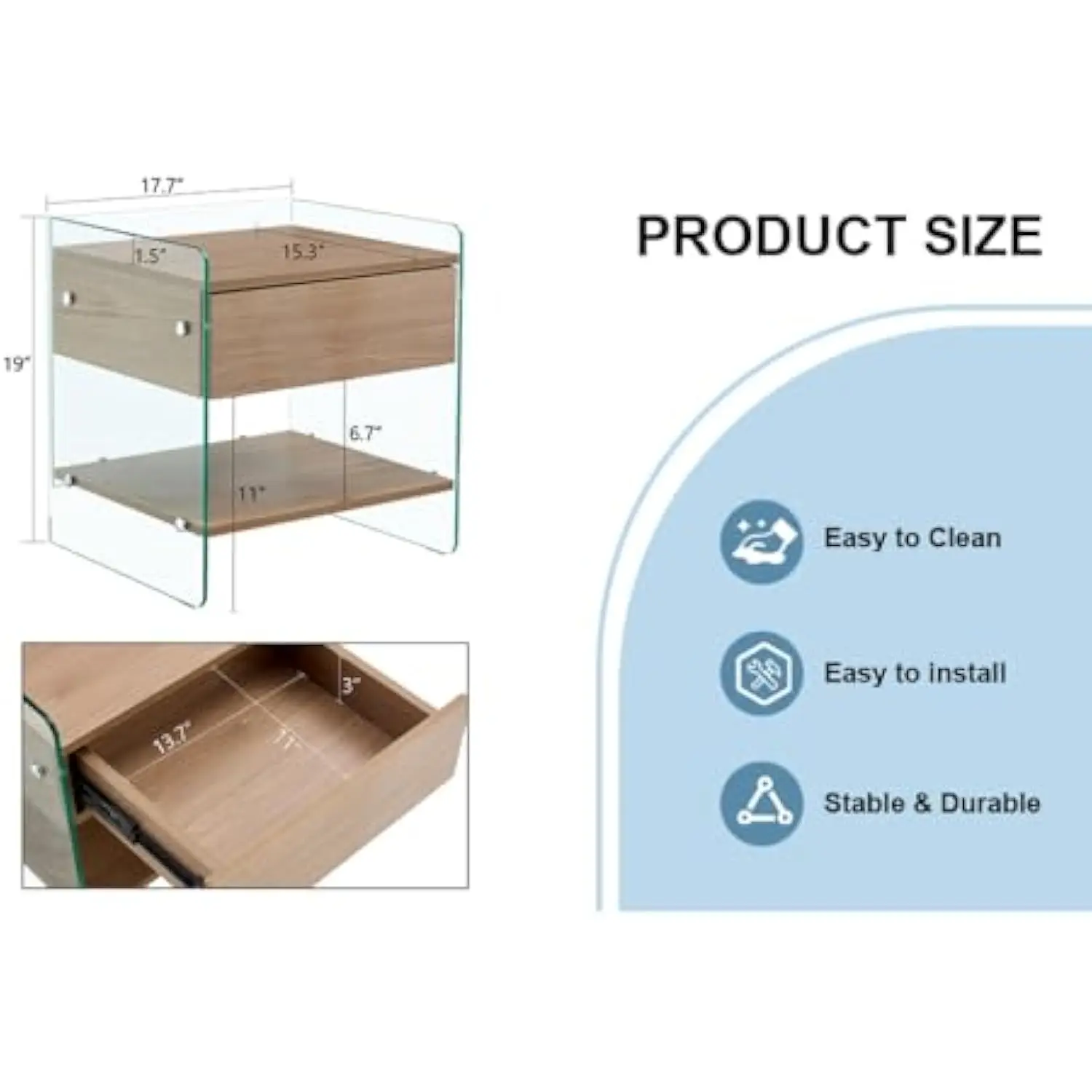
Common Repairs
Water Rings
– On film finishes: Wipe with mixture of baking soda and toothpaste
– On oil finishes: Light sanding and oil reapplication
– On wax finishes: Buff with #0000 steel wool and reapply waxMinor Scratches
– Film finishes: Rub with appropriate color furniture marker then polish
– Oil/wax finishes: Apply finish to affected area and buffDull Areas
– Film finishes: Apply polish or restorative product specific to finish type
– Oil finishes: Clean and apply fresh oil coat
– Wax finishes: Buff with soft cloth or apply thin fresh coat
Frequently Asked Questions About Coffee Table Finishes
Are there food-safe finishes for multipurpose coffee tables?
Pure tung oil, pure beeswax, and some hardwax oil products are food-safe once fully cured. Look for products specifically labeled as food-safe if your coffee table doubles as a casual dining surface.
How should I finish reclaimed or antique wood coffee tables?
Aged wood vintage coffee tables often benefit from penetrating oil finishes that enhance character without hiding the wood’s history. Test finishes on an inconspicuous area first, as older woods may absorb products differently.
What are the most environmentally friendly finish options?
Water-based polyurethanes, pure oils (tung, linseed), and natural waxes have the lowest environmental impact and minimal VOCs. Many manufacturers now offer “green” versions of traditional finishes with reduced environmental impact.
Can I layer different finish types?
Yes, with proper technique. Shellac works well under most finishes to enhance grain. Oil under wax is a traditional combination. Always ensure bottom layers are fully cured before applying top layers, and test compatibility in an inconspicuous area.
Should table legs be finished differently than tops?
While using the same finish throughout creates cohesion, table legs can sometimes benefit from more durable finishes as they experience different types of wear (vacuum bumps, foot traffic). For mixed-material tables, match the finish to each material’s needs.
How can I enhance wood color while maintaining protection?
Apply wood stain or dye before your protective finish, or choose finishes with built-in color enhancement like Danish oil or tinted polyurethane. Test on scrap wood from the same species first to preview results.
Complementary Protection Options Beyond Finishes
Even the best finish benefits from additional protective measures:
Glass Tops
– Provide complete protection from spills and heat
– Available in various thickness options (3/16” to 1/4” most common)
– Can be custom cut to exact table dimensions
– May be ordered with polished edges or beveled designs
– Creates a more formal look while protecting the wood underneath
Glass-top coffee tables integrate this protection directly into their design, offering both style and practicality.
Table Pads and Covers
– Felt-backed table pads protect from heat and scratches
– Custom-fitted covers available for occasional protection
– Table runners provide protection in high-use zones
– Fabric placemats offer targeted protection with decorative appeal
Coaster Strategy
– Keep coasters in convenient locations around the table
– Choose absorbent and decorative options that guests will want to use
– Consider coaster holders that become part of your table’s design
– Establish a household habit of always using coasters
The most beautiful wood finish still needs some help maintaining its appearance over years of use. Finding the right balance between protecting your coffee table and enjoying its natural beauty ensures you’ll appreciate this centerpiece furniture for years to come.
Hearth Forms offers a selection of quality mid-century modern coffee tables that pair beautifully with any of these finish options, allowing you to match your protection strategy to your lifestyle needs while maintaining timeless style.

